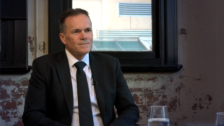Future Fund prognostication failure reminds us that markets don’t care what you think
Another year that was meant to be an arduous one for investors ultimately turned out to be smooth sailing.
Nearly every time the leaders at Australia’s sovereign wealth fund – the Future Fund – speak, they warn of an incredibly challenging period for investors, or a new ‘paradigm’ of investing. Yet time and again returns remain strong, and the primary drivers rarely change; equity markets usually go up, and considered, risk-adjusted investment decisions built around an asset allocation framework are good for portfolios of any size.
This financial year the Future Fund managed to post a 9.1 per cent return, despite last year flagging that “favourable investment conditions that drove markets in recent decades have been undergoing profound changes”.
There are plenty of takeaways from the Future Fund’s latest result, with the manager ultimately benefitting from strong returns in global shares, hedge funds and private credit. But there are also many questions for those watching at home to consider.
Chief among these are concerns about the changing nature of the market, balanced against the need to take any sort of short-term commentary with a grain of salt. For those who simply stuck to a basic index strategic asset allocation, for instance, the returns for the financial year were more like 12 per cent (a full 30 per cent higher than the Future Fund, despite all the shifting of money and complexity of strategy).
Of course, these aren’t risk-adjusted returns, and an investor in the latter likely experienced greater volatility, but it does bring into question the need for increasingly levels of complexity, particularly for retirement assets.
The Future Fund is, by design, required to outsource the vast majority of investment decisions and roles to external managers as it operates as more of a large scale ‘fund of funds’. It stands apart from most of the big super funds in the institutional investment sector in Australia for this reason, as they have largely embarked on an aggressive internalisation approach, in which they manage more of members money themselves, without the help of external fund managers.
Whether internalisation or outsourcing is better depends on who you ask. This year it looked closer than ever, as both Australian Super and the Future Fund all but matched returns, noting the significant differences in asset allocation and asset class selection. It doesn’t really answer the question as to which is better, but likely just opens the door for more of both.
As the market had another relatively strong year, and the “challenging” conditions predicted by the Future Fund didn’t really come to pass, the value and role of non-traditional and so-called ‘non correlated’ assets was challenged once again. Typically more expensive, and expected to pay off during periods of market stress, the lack of a prolonged downturn for several years now has meant a lot of the work, fees and due diligence that goes into investing in these strategies went mostly unrewarded.
Investing into direct assets like property and infrastructure at a time when interest rates and funding costs are increasing has become problematic. The lack of liquidity in these options makes it incredibly difficult to change course, particularly during a period in which valuations have been or are expected to fall in the double digits amid a flow on of revaluations.
The Future Fund has warned that investing “is only getting harder from here”, noting a reduced exposure to fully priced equities and interest rates with inflation hedges is also in place. Australian and global shares have increased to 37 per cent over the year, while the fund is doubling down on alternatives and private equity, which now represents nearly a third of its assets.
Whether this years’ prognostication is as poor as last year’s, only time will tell. But the forecasting misstep from Australia’s sovereign wealth fund does serve as a reminder that even the best, well-funded investment teams are still at the mercy of markets. Fundamentals like asset allocation and diversification reign supreme, but markets are like sovereign nations themselves.











